
The Battle of Bennington was a battle of the American Revolutionary War, part of the Saratoga campaign, that took place on August 16, 1777, on a farm in Walloomsac, New York, about 10 miles (16 km) from its namesake, Bennington, Vermont. An American force of 2,000 men, primarily New Hampshire and Massachusetts militiamen, led by General John Stark, and reinforced by Vermont militiamen led by Colonel Seth Warner and members of the Green Mountain Boys, decisively defeated a detachment of General John Burgoyne's army led by Lieutenant-Colonel Friedrich Baum, and supported by additional troops under Lieutenant-Colonel Heinrich von Breymann.
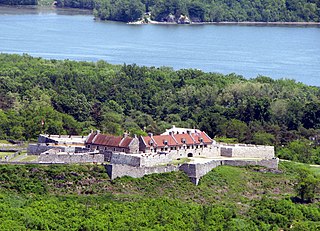
Fort Ticonderoga, formerly Fort Carillon, is a large 18th-century star fort built by the French at a narrows near the south end of Lake Champlain in northern New York. It was constructed between October 1755 and 1757 by French-Canadian military engineer Michel Chartier de Lotbinière, Marquis de Lotbinière during the action in the "North American theater" of the Seven Years' War, known as the French and Indian War in America. The fort was of strategic importance during the 18th-century colonial conflicts between Great Britain and France, and again played an important role during the American Revolutionary War.
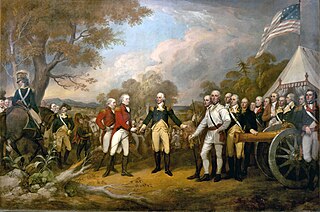
The Battles of Saratoga marked the climax of the Saratoga campaign, giving a decisive victory to the Americans over the British in the American Revolutionary War. British General John Burgoyne led an invasion army of 7,200–8,000 men southward from Canada in the Champlain Valley, hoping to meet a similar British force marching northward from New York City and another British force marching eastward from Lake Ontario; the goal was to take Albany, New York. The southern and western forces never arrived, and Burgoyne was surrounded by American forces in upstate New York 15 miles (24 km) short of his goal. He fought two battles which took place 18 days apart on the same ground 9 miles (14 km) south of Saratoga, New York. He gained a victory in the first battle despite being outnumbered, but lost the second battle after the Americans returned with an even larger force.

The Battle of Valcour Island, also known as the Battle of Valcour Bay, was a naval engagement that took place on October 11, 1776, on Lake Champlain. The main action took place in Valcour Bay, a narrow strait between the New York mainland and Valcour Island. The battle is generally regarded as one of the first naval battles of the American Revolutionary War, and one of the first fought by the United States Navy. Most of the ships in the American fleet under the command of Benedict Arnold were captured or destroyed by a British force under the overall direction of General Guy Carleton. However, the American defense of Lake Champlain stalled British plans to reach the upper Hudson River valley.

The Battle of Carillon, also known as the 1758 Battle of Ticonderoga, was fought on July 8, 1758, during the French and Indian War. It was fought near Fort Carillon on the shore of Lake Champlain in the frontier area between the British colony of New York and the French colony of New France.

William Howe, 5th Viscount Howe,, was a British Army officer who rose to become Commander-in-Chief of British land forces in the Colonies during the American War of Independence. Howe was one of three brothers who had distinguished military careers. In historiography of the American war he is usually referred to as Sir William Howe to distinguish him from his brother Richard, who was 4th Viscount Howe at that time.
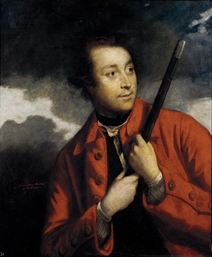
General James Inglis Hamilton was a Scottish soldier. He enlisted in the British Army in 1755 and commanded several regiments. He was the only colonel of the 113th Regiment of Foot. During the Seven Years' War (1756–1763), Hamilton fought in the Siege of Fort St Philip, the Raid on St Malo, and the Capture of Belle Île.

The Saratoga campaign in 1777 was an attempt by the British high command for North America to gain military control of the strategically important Hudson River valley during the American Revolutionary War. It ended in the surrender of the British army, which historian Edmund Morgan argues, "was a great turning point of the war, because it won for Americans the foreign assistance which was the last element needed for victory."
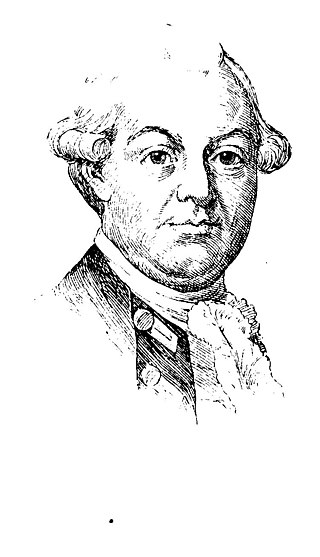
Simon Fraser was a British general during the American War of Independence. He was killed in the Battle of Bemis Heights during the Saratoga Campaign. The shot that killed Fraser is often attributed to Timothy Murphy, of Daniel Morgan's Rifle Corps, which was assigned to the Left and under the command of Benedict Arnold, who was leading Morgan's men as well as Dearborn, Cilley, Poor, and the rest of the American left wing, which was attempting to push back the reconnaissance in force led by Simon Fraser on the Barber Wheatfield.

The Invasion of Quebec was the first major military initiative by the newly formed Continental Army during the American Revolutionary War. The objective of the campaign was to seize the Province of Quebec from Great Britain, and persuade French-speaking Canadiens to join the revolution on the side of the Thirteen Colonies. One expedition left Fort Ticonderoga under Richard Montgomery, besieged and captured Fort Saint-Jean, and very nearly captured British General Guy Carleton when taking Montreal. The other expedition, under Benedict Arnold, left Cambridge, Massachusetts, and traveled with great difficulty through the wilderness of Maine to Quebec City. The two forces joined there, but they were defeated at the Battle of Quebec in December 1775.

The Battle of Oriskany was a major engagement of the Saratoga campaign during the American Revolutionary War. On August 6, 1777, an American column of Tryon County militia and Oneidas marching to relieve the siege of Fort Stanwix was ambushed by a contingent of Britain's Indigenous allies and Loyalists. It was one of the few battles of the war in which most non-Indigenous participants were settlers born in the Thirteen Colonies. The Americans suffered heavy casualties during the battle.

The siege of Fort Ticonderoga occurred between 2 July and 6 July 1777 at Fort Ticonderoga, near the southern end of Lake Champlain in the state of New York. Lieutenant General John Burgoyne's 8,000-man army occupied high ground above the fort, and nearly surrounded the defenses. These movements precipitated the occupying Continental Army, an under-strength force of 3,000 under the command of General Arthur St. Clair, to withdraw from Ticonderoga and the surrounding defenses. Some gunfire was exchanged, and there were some casualties, but there was no formal siege and no pitched battle. Burgoyne's army occupied Fort Ticonderoga and Mount Independence, the extensive fortifications on the Vermont side of the lake, without opposition on 6 July. Advance units pursued the retreating Americans.
Friedrich Baum was a senior officer of Brunswick–Luneburg troops who commanded dragoons in the Northern Theater of the American War of Independence. Baum was mortally wounded at the Battle of Bennington.
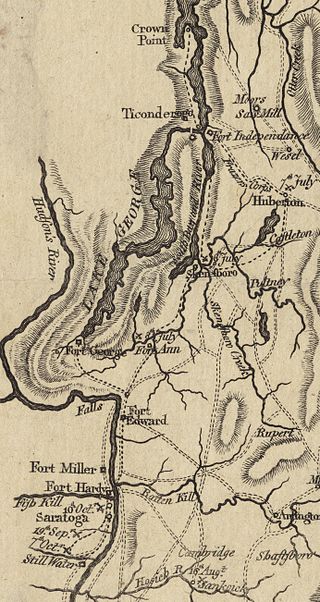
The Battle of Hubbardton was an engagement in the Saratoga campaign of the American Revolutionary War fought in the village of Hubbardton, Vermont. Vermont was then a disputed territory sometimes called the New Hampshire Grants, claimed by New York, New Hampshire, and the newly organized, not yet recognized, but de facto independent government of Vermont. On the morning of July 7, 1777, British forces, under General Simon Fraser, caught up with the American rear guard of the forces retreating after the withdrawal from Fort Ticonderoga. It was the only battle in Vermont during the revolution.

The 2nd New Hampshire Regiment was formed in early May 1775, as the second of three Continental Army regiments raised by the state of New Hampshire during the American Revolutionary War. Its first commander was Colonel Enoch Poor, with Joseph Cilley as major. Many of the men who served in the unit hailed from southeastern New Hampshire and western Maine. During the first part of its service, the regiment took part in the siege of Boston, and there is a link below in the reference section to the orderly book of an officer in the unit during that time.
Nathan Hale was an American Revolutionary War officer who fought in the Battle of Lexington and Concord, Battle of Bunker Hill, and the Siege of Fort Ticonderoga, Hale was caught at British borders in Manhattan, New York and died as a POW at the age of 21.

Mount Independence on Lake Champlain in Orwell, Vermont, was the site of extensive fortifications built during the American Revolutionary War by the American army to stop a British invasion. Construction began in July 1776, following the American defeat in Canada, and continued through the winter and spring of 1777. After the American retreat on July 5 and 6, 1777, British and Hessian troops occupied Mount Independence until November 1777.

The Battle of Forts Clinton and Montgomery was an American Revolutionary War battle fought in the Hudson Highlands of the Hudson River valley, not far from West Point, on October 6, 1777. British forces under the command of General Sir Henry Clinton captured Fort Clinton and Fort Montgomery and then dismantled the first iteration of the Hudson River Chains. The purpose of the attack was to create a diversion to draw American troops from the army of General Horatio Gates, whose army was opposing British General John Burgoyne's attempt to gain control of the Hudson.
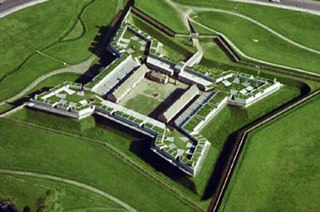
The siege of Fort Stanwix began on August 2, 1777, and ended on August 22, 1777. Fort Stanwix, at the western end of the Mohawk River Valley, was a primary defense point for the Continental Army against the British and indigenous forces aligned against them during the American Revolutionary War. The fort was occupied by Continental Army forces from New York and Massachusetts under the command of Colonel Peter Gansevoort. The besieging force was composed of British regulars, Loyalist soldiers, Hessians, and indigenous warriors, under the command of Brigadier General Barry St. Leger. St. Leger's expedition was a diversion in support of Lieutenant General John Burgoyne's campaign to take control of the Hudson River Valley to the east.

The military career of Benedict Arnold from 1777 to 1779 was marked by two important events in his career. In July 1777, Arnold was assigned to the Continental Army's Northern Department, where he played pivotal roles in bringing about the failure of British Brigadier Barry St. Leger's siege of Fort Stanwix and the American success in the battles of Saratoga, which fundamentally altered the course of the war.













